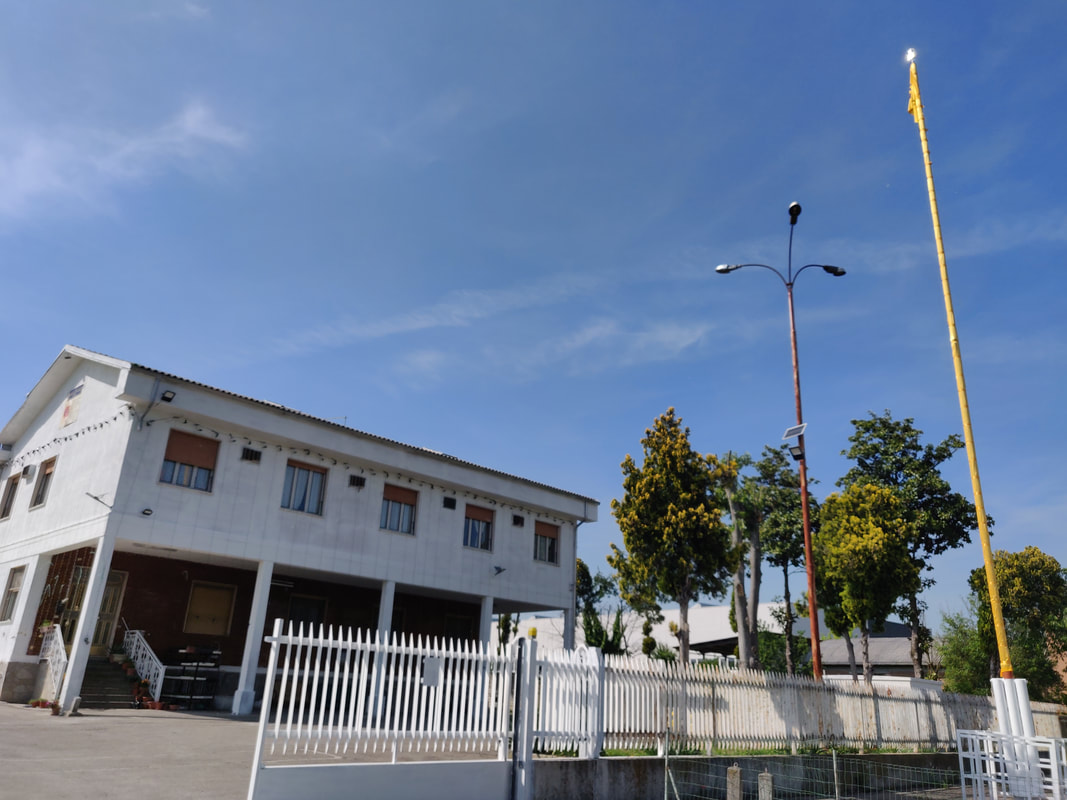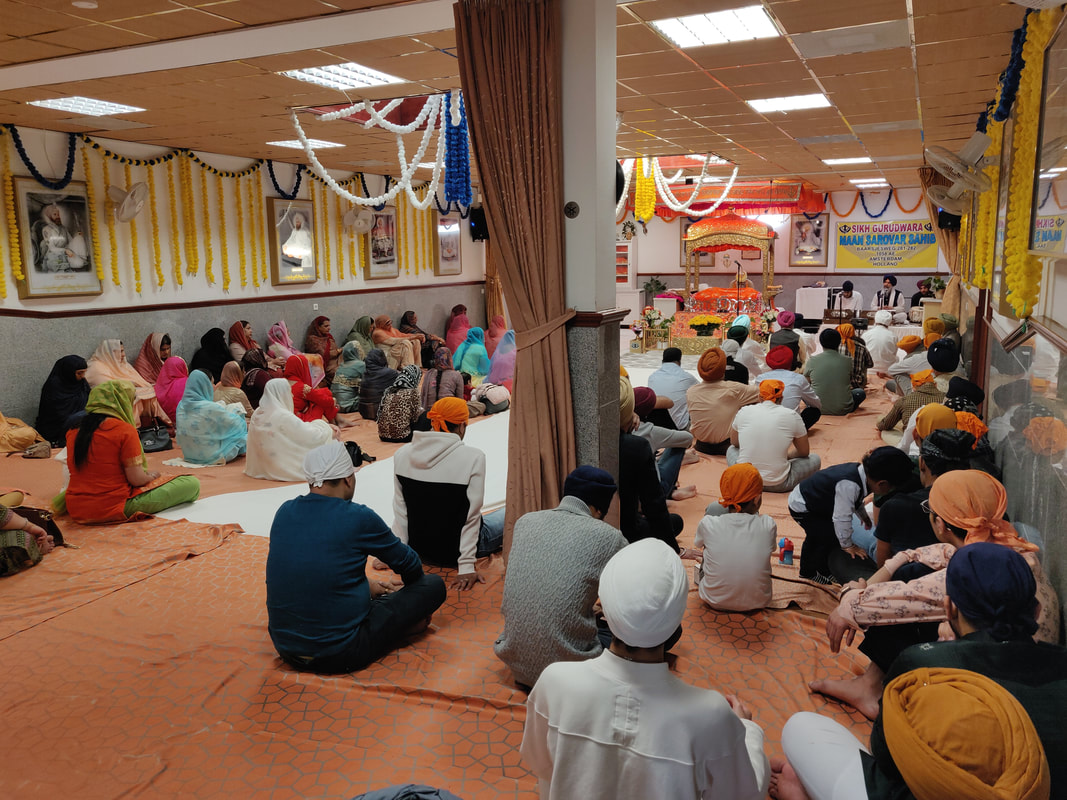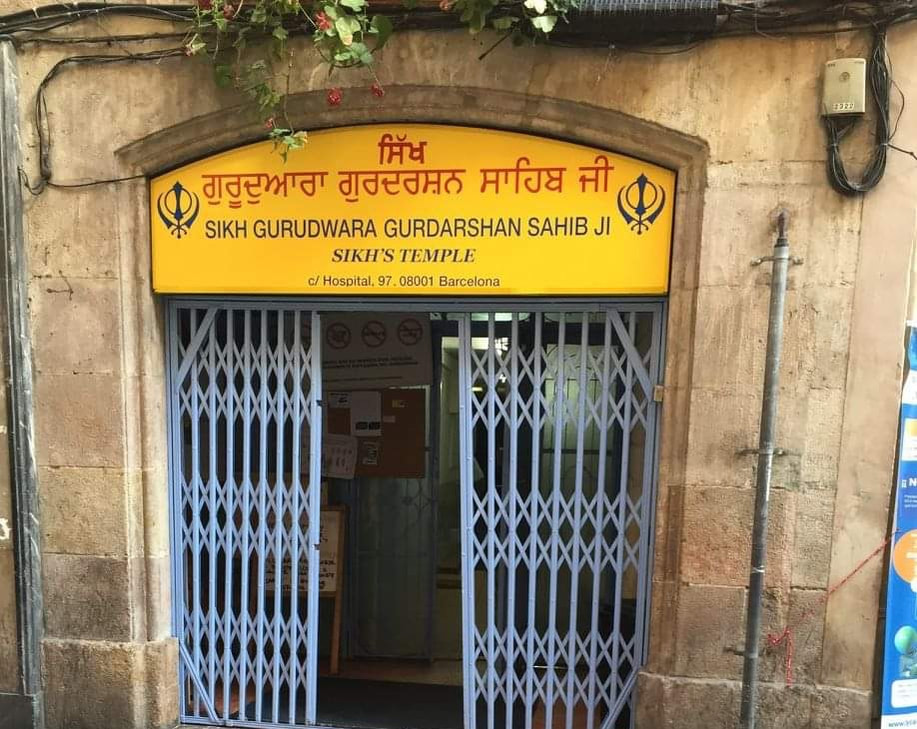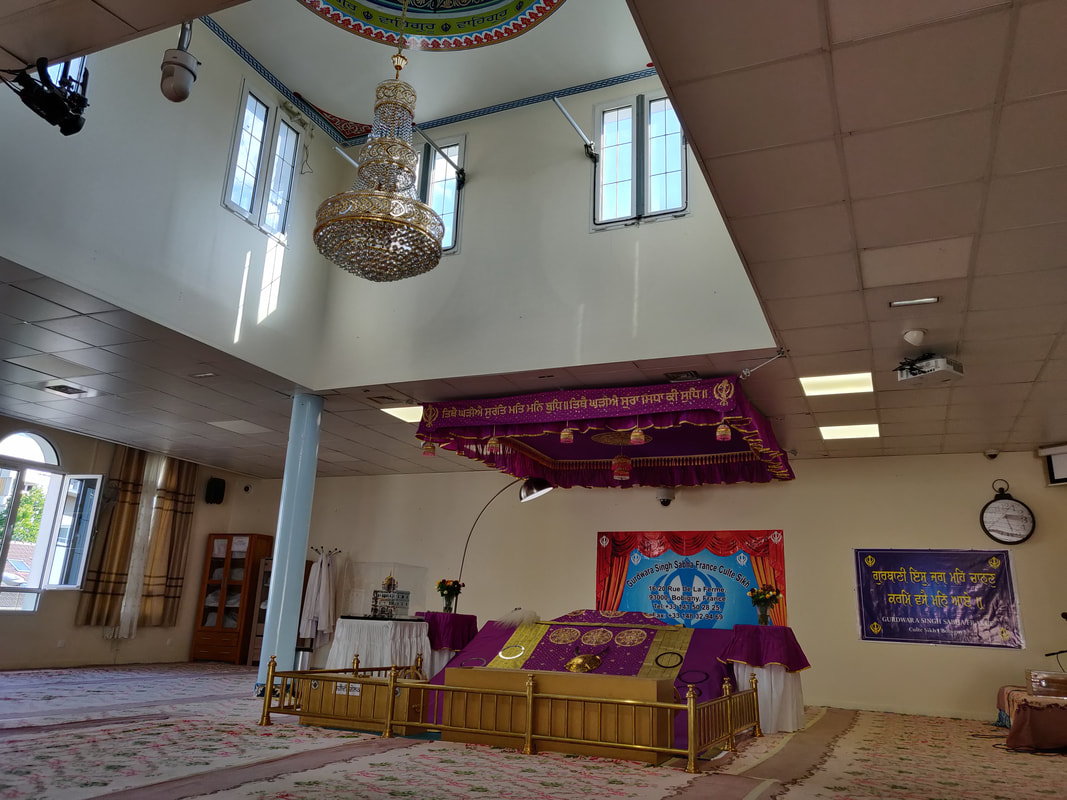Gurdwaras in EuropeThe first three articles in this series focused on Gurdwaras in the UK, this fourth part looks a little further afield at continental Europe. While the Sikh population is significantly smaller in continental Europe than it is in the UK, countries like Italy and Spain host rapidly growing communities. This has led to a growth in the number of Gurdwaras in those countries. This is also true in countries with smaller Sikh populations like Ireland, France and the Netherlands. In this article I explore 5 Gurdwaras in continental Europe. You can read the rest of the series by following these links: Part 1: Gurdwaras in the Midlands Part 2: (More) Gurdwaras in the Midlands Part 3: Gurdwaras in London & the South East Background to the articleThe immigration pattern of Sikhs has largely reflected the subjugation of Panjab under the British Empire for almost 100 years. Sikhs have moved in large numbers to either the United Kingdom, or other former colonies of the UK like Canada, Australia, South Africa, Kenya, and the United States. Immigration to countries outside of these former colonies has been limited and more recent, although Maharaja Daleep Singh spent his final years in Paris and battalions of Sikh soldiers marched through France, Belgium and Germany during the two World Wars. Panjabi immigration to continental Europe increased during the latter part of the 20th century, particularly after the 1990s focused largely in Spain and Italy. Immigration has clear network effects - in countries where there is already an established Sikh community, informal networks make it easier for newer movers to find informal jobs and have support from the community. So when government programmes, particularly in agriculture, created opportunities for Sikhs to initially move to those two countries, it also created an environment for the continuous movement of Sikhs from Panjab into Spain and Italy. While established Sikh communities also exist throughout continental Europe, their numbers are considerably smaller. The Greek debt crisis cut what was then a rapidly growing Sikh population, while France's extreme approach to secularity has kept the population relatively small there. Off the back of this immigration has been the growth of Gurdwaras being constructed throughout Europe. These Gurdwaras, while based on Sikh architecture, have at times bought in local architectural influences to create interesting results making visiting Gurdwaras in different European countries a fascinating experience. As I did for the three previous articles, I want to set out a clear understanding of this list. This list is based solely on the architecture of the Gurdwara and does not consider aspects like the political stance of the Gurdwara or any committee issues. I'm not a local to many of these Gurdwaras so I might not understand where committees are good or bad, I can only make a judgement on my brief visits. Secondly, I understand that Gurdwaras are supposed to be humble places to meditate and connect with the timeless. I also agree that any excess money should be spent on community projects to uplift the most vulnerable in society and not add golden domes to Gurdwaras. I think this current generation is effecting this change with community projects bring set up all over the UK (you can see a list of them here). For a more detailed background to these articles, I strongly suggest reading the background section of my first article on UK Gurdwaras here. 5. Guru Nanak Darbar, Dublin, IrelandThe Sikh community in Ireland is relatively small, and immigration has also been quite recent, starting slowly in the 1970s, with a bit more growth following the Sikh Genocide of the 1980s and another wave of growth in the first decade of the 21st century. Dublin is served by one Gurdwara, Guru Nanak Darbar, which dates back to 1986. The Gurdwara is slightly outside the city centre in the Ballsbridge area of the city, close to the spectacular Aviva Stadium. I caught a bus to visit the Gurdwara and a short train journey back into the city - both forms of transport are within a very short walking distance. Guru Nanak Darbar is a converted theatre, and although relatively small, stands out in its brilliant white exterior set behind a black gate that separates the Gurdwara from the road. I visited on a Sunday and the Darbar Sahib had a decent amount of sangat with kirtan being conducted by young children and then adults, a lone Akali Nihang Singh was conducting a watch over Guru Ji. The Darbar Sahib is on the smaller side, and is slightly square shaped, which compared to the usual rectangular proportions of most Gurdwaras feels very different and is a big reason why it'll stick with me long after I've left. The Gurdwara runs Gurmukhi and Gurmat classes and is currently in the process of setting up kirtan classes for youngsters. You can read about my trip to Dublin here. 4. Maan Sarovar Sahib, Amsterdam, NetherlandsThe Sikh community in the Netherlands numbers less than 15,000, largely centred around Amsterdam. Despite their small size, they have some great resources, with the Sikh Society of the Netherlands creating educational materials in Dutch to share the message of Sikhi in their adopted land. There are a couple of Gurdwaras near Amsterdam city centre and on this list I'm focusing on Gurdwara Maan Sarovar Sahib, the closest Gurdwara to the city centre. Located in one of Amsterdam's famous townhouse style buildings it's not very big and can be easy to miss as there is no visible Nishaan Sahib. That being said, it is a perfect example of a Gurdwara being adapted to local architecture which makes for a unique experience. The Darbar Sahib is at street level and you can see (and hear) keertan being done from outside the Gurdwara, It was fantastic to see so much sangat in Amsterdam, particularly as I hadn't seen many Sikhs during any of my visits. The Darbar Sahib was packed, and some of the sangat was standing up. listening to katha (exposition). Next door is a compact langar hall which serves the local Sikh community. You can read about my visit to Amsterdam here. 3. Gurdwara Gurdarshan Sahib Ji, Barcelona, SpainThe Sikh community in Spain is relatively small but it's also growing quickly. There are about 25,000 Sikhs in Spain, with about half of them near the city of Barcelona (which also houses about half of Spain's Gurdwaras). During my visits to Barcelona, I was always surprised to see how quickly the Sikh population was growing between my visits and almost every small convenience shop I went into seemed to be owned by Panjabis during my last trip. While most cities have Gurdwaras outside the main city centre, Gurdwara Gurdarshan is right in the beating core of Barcelona off one of the side streets of La Rambla - a key area of the city filled with tourists. The Gurdwara is housed in a small building and is easily missed (I walked past it initially), but the Darbar Sahib inside is deceptively large. Much like Gurdwara Maan Sarovar in Amsterdam, Gurdwara Gurdarshan is housed in a Catalan style townhouse building with the only distinguishing features being the basant yellow colour of Sikhi and the Gurmukhi text on the front gate. I always love seeing Gurdwaras in different architectural styles, and this was a great experience. Importantly, the sound of numerous kids with their long hair tied up speaking a mix of Panjabi and Spanish showed me there is a strong future for Sikhi in this part of Spain. I sat down and managed to speak to the Giani about the size of the Sangat and the reception of locals to Sikhs. He said a lot of international Sikhs come to the Gurdwara, as well as locals, both Panjabi and Spanish. A lot of local yoga students also use the Gurdwara to meditate which I found quite nice. He told me that the local people are very welcoming of Sikhs and they even have a Nagar Kirtan through the city. You can read about my trip to Barcelona here. 2. Gurdwara Singh Sabha, Paris, FranceThe cultural exchange between Sikhs and France dates back to the Sikh Empire with former Napoleonic generals and soldiers serving the armies of the Sarkaar Khalsa. 100 years later, tens of thousands of Sikh soldiers fought in the fields of France across two World Wars. However, despite this long link, the relationship between Sikhs and the French state is a strained one. The Sikh community in Paris, as with the rest of France, is very small. A ban on the dastaar was protested against with some rigour, and left a sour taste in my mouth - after all, it was 80,000 Sikh turbans that fell defending France against the Germans in two world wars. The Sikh community is centred on the Bobigny area of Paris, about a half hour drive from the centre of Paris. Gurdwara Singh Sabha is the largest Gurdwara in France and is easy enough to find, although parking is limited. Its built in the same style of many of the newer Gurdwaras in England and the Nishaan Sahib stands high above. It's a decent size, with enough space to accommodate the near 4,000 members of the Sikh community who live nearby. It's a Panthic Gurdwara, with pictures of Shaheed Singh's from the 1984 resistance across the Gurdwara, and a recreation of the torn down Akaal Takht placed next to the Shabad Guru. It's evident that even in France feelings around the Sikh Genocide reverberate with the new generation. You can read about my visit to Paris here. 1. Darbar Sri Guru Granth Sahib Ji, Parma, ItalyThe link between Italy and Sikhi predates the modern country of Italy. Back when the Italian peninsula was a patchwork of kingdoms, an enterprising Italian soldier, Jean-Baptise Ventura, served under the French and Persian Empires before finding himself in Lahore, the capital of the Sikh Empire. Here, he found fame by helping modernise the regular Sikh army, training them in European drill, and making the army one of the most powerful outside of Europe.
200 years later, the movement is largely in the opposite direction, with nearly 100,000 Sikhs calling Italy home (the second largest Sikh population in Europe). There are two large population centres for Sikhs - the largest is in the northern Po Valley, with a smaller community located just south of Rome. In both areas, Sikhs make their living in agriculture, primarily in the dairy industry. I visited a couple of Gurdwaras in the north - both in the beautiful city of Parma, and in this list I want to focus on Darbar Sri Guru Granth Sahib Ji. The Gurdwara is very much in the countryside, closer to the village of San Prospero - but it's a short taxi ride or bike ride (which is what I did). The large Gurdwara building is visible from the main highway and, surrounded by fields, almost makes you feel like you are in Panjab. The first thing that struck me was the sheer size of the Gurdwara, it's much larger than I imagined - not only is the building itself big, but the land attached to it is also quite significant. The Gurdwara is relatively new and speaking to the local sangat I understood that the Gurdwara was built by Sant Baba Baldev Singh Bulandpuri. The sangat gave me a short history on Baba Ji and the work he has done globally to spread the message of Sikhi. Inside, the Gurdwara has one of the most impressive yet simple Darbar Sahibs that I have ever seen, high ceiling and colourful drapes provide an incredible setting for Guru Granth Sahib, and it felt incredibly peaceful as a member of the sangat nearby was meditating while the Granthi Singh was reading Rehraas Sahib. Perhaps it was the peace after a long bike ride, the cool shade after a hot day, the beautiful setting, or just the words of the Shabad Guru - but it's a moment that will stay with me for a while. You can read about my trip to Parma here. As with the other articles covering Gurdwaras in the UK, I hope this has inspired some of you to go out and check out your local Gurdwaras or take a trip to London and the south east to visit some of the ones I've covered here. While these Gurdwaras can get busy on weekends, if you're able to visit on weeknights you can learn more about Sikhi and find a quiet place to pray and meditate. Comments are closed.
|
AuthorBritish Sikh, born in the Midlands, based in London, travelling the world seeing new cultures. Categories
All
|








 RSS Feed
RSS Feed